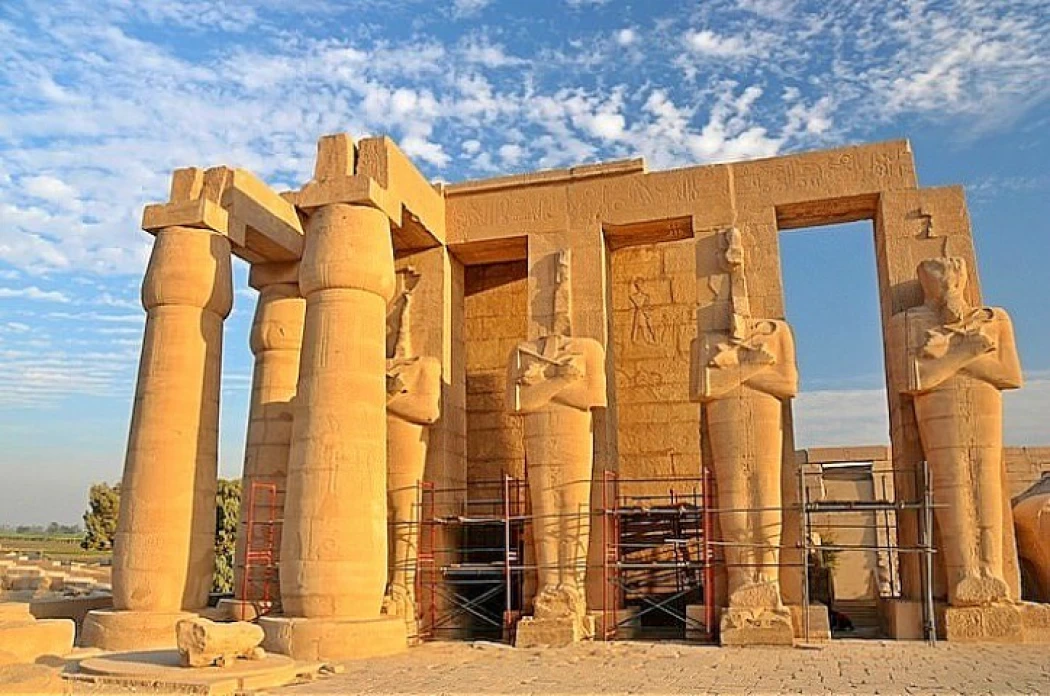
Ramesseum Temple | Luxor Attractions
Ramesseum Temple
This temple derives its name from the name of King Ramses II, who is buried there. The "Ramesseum" temple's entrance is situated near Luxor on the eastern side of the Nile. It is situated across from the present-day city of Luxor in the Theban cemeteries of Upper Egypt, on the western side of the Nile River. It was not until Jean-François Champollion's 1829 visit to the ruins that the names and titles of Ramesses were identified in hieroglyphic script on the walls. It was originally called the House of the Millions of Years of Usermaatre-Setepenre, Unifier of the City of Thebes in the Kingdom of Amun. Usermaatre-Setepenre was the pharaonic name of Ramesses II.
Ramesses II modified, appropriated, or built from the ground up many buildings, the most magnificent of which, in accordance with the royal burial practices of the New Kingdom, was his memorial temple: a place dedicated to the worship of the pharaoh, the god of the earth, where his memory would live on after his death. Surviving records indicate that work on the project began shortly after the beginning of his reign and continued for 20 years.
The design of the funerary temple of Ramesses II adheres to the standard canons of New Kingdom Egyptian temple architecture. The temple itself, oriented northwest-southeast, consists of two stone pylons (gates, about 60 metres wide), one after the other, each leading into a courtyard. Beyond the second court, in the centre of the complex, was a covered hypostyle hall with 48 columns, surrounding the inner sanctuary. A massive gateway stood in front of the first court, and the royal palace was to the left, with a colossal statue of the king looming behind it.[2] As was customary, the towers and outer walls were decorated with scenes commemorating the pharaoh's military victories, leaving a great record of his devotion and closeness to the gods.
In the case of Ramesses II, great importance was given to the Battle of Kadesh (c. 1274 BC); however, more interestingly, one of the buildings above the first pylon records his sack, in the eighth year of his reign, of a city called "Shalem", which was probably Jerusalem. Scenes of the great pharaoh's victory over the fleeing Hittite forces at Kadesh, as depicted in the canons of the epic poem Pentur, can still be seen on the pylon.
Unlike the colossal stone temples that Ramesses II had carved out of the face of the Nubian Mountains at Abu Simbel, the three thousand years that passed since its construction were not kind to Ramesses II’s “Million Years Temple” at Thebes. This was largely due to its location on the edge of the Nile floodplain, where the annual flooding gradually eroded the foundations of this temple and its neighbors. Neglect and the rise of new religions also took their toll: for example, in the early years of the Christian era, the temple was put into service as a Christian church.
















